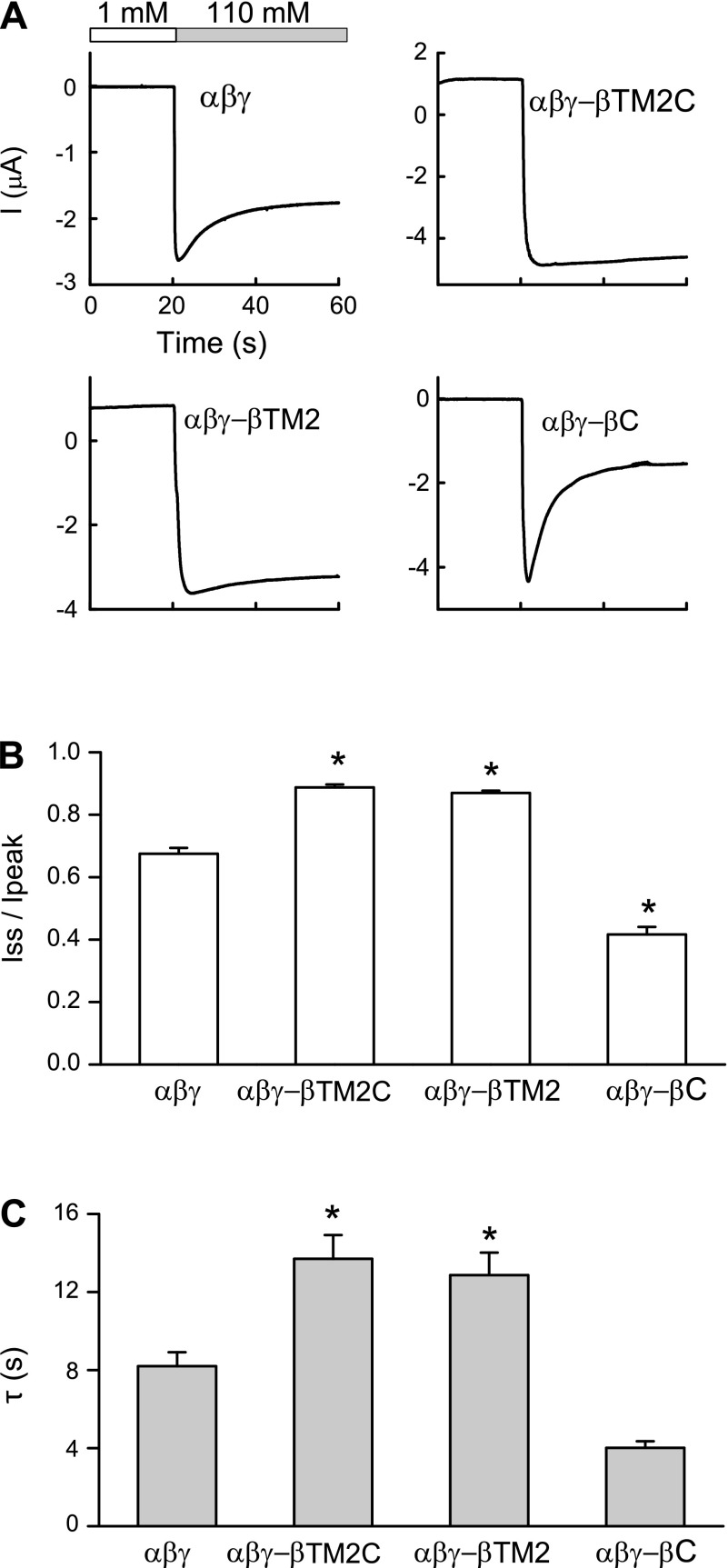Fig. 2.
Na+ self-inhibition is reduced in αβγ-βTM2C and αβγ-βTM2 channels A: representative recordings of the Na+ self-inhibition response of wild-type or mutant channels are shown. At t = 20 s, bath perfusion with 1 mM Na+ (open bar) was switched to 110 mM Na+ (grey bar) to initiate the Na+ self-inhibition response. B: extent of channel inhibition by Na+ (Iss/Ipeak) is illustrated. The peak current (Ipeak) was the maximal inward current immediately after bath exchange. The steady-state current (Iss) was measured 40 s after Ipeak. C: time constants of current decay (τ-values) were estimated as described in the experimental procedures. A total of 42 recordings of wild-type channels and 14–40 recordings of mutant channels were collected. *P < 0.05, statistical significance between αβγ-channels and mutant channels, as determined by one-way ANOVA followed by a Bonferroni test.

